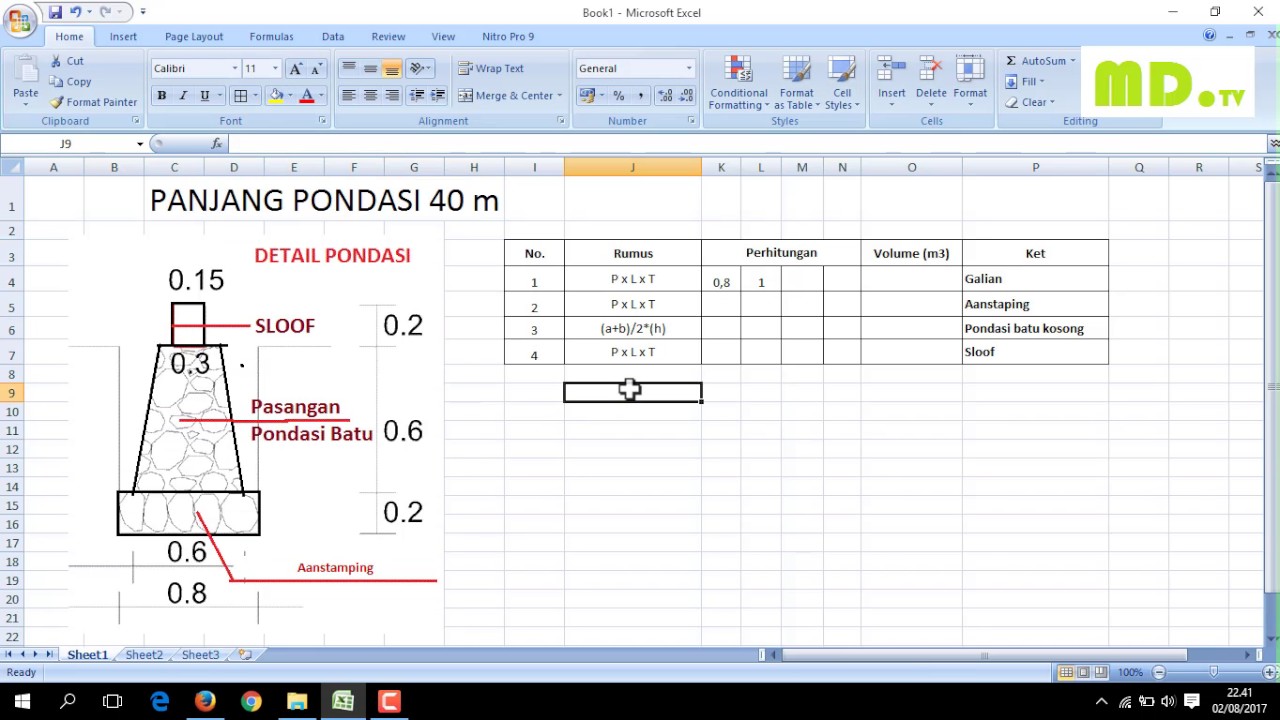When it comes to constructing a building, calculating the volume of the structure is an essential and crucial step. Accurate measurements ensure that the project remains within budget and meets regulatory requirements. Fortunately, the process of calculating the volume of a building is relatively straightforward, and the use of modern technology has made it even easier. In this article, we will examine the various methods of calculating the volume of a building and the tools that can be utilized to make the process more efficient.
Method 1: Measurements and Calculations
The traditional method of calculating the volume of a building is through measurements and calculations. The first step is to measure the height, length, and width of each room in the building. The height measurement may require a ladder or other equipment to reach high ceilings. Once the measurements are taken, the next step is to calculate the volume of each room. This is done by multiplying the length, width, and height measurements. For example, if a room has a length of 10 meters, a width of 5 meters, and a height of 3 meters, the volume of the room would be 150 cubic meters (10 x 5 x 3 = 150).
After determining the volume of each room, the next step is to add them all together to find the total volume of the building. This calculation can be done manually, but it is time-consuming, and there is always a risk of errors. Luckily, there are various software programs available that can perform the calculation quickly and accurately.
Method 2: 3D Laser Scanning
Another method of calculating the volume of a building is through the use of 3D laser scanning. This technology uses lasers to scan the building and create a detailed 3D model. The scanner can capture accurate measurements of the height, length, and width of each room, as well as any irregularities in the structure. Once the scan is complete, the software can generate a report that includes the total volume of the building and other relevant information.
One of the main benefits of 3D laser scanning is the accuracy of the measurements. The technology can capture even small details with high precision, reducing the risk of errors and miscalculations. Additionally, it is much faster than the traditional method of measurements and calculations. A 3D laser scanner can capture the data in a matter of hours, whereas the manual method can take days or even weeks.
Method 3: Building Information Modeling (BIM)
Building Information Modeling (BIM) is a relatively new method of calculating the volume of a building. BIM is a process that involves creating a digital 3D model of the building, which includes all the relevant information about the structure, such as dimensions, materials, and systems. The model can be viewed, edited, and analyzed in real-time, making it an incredibly powerful tool for architects, engineers, and construction professionals.
One of the key advantages of BIM is the ability to calculate the volume of the building automatically. The software can analyze the 3D model and generate a report that includes the total volume of the structure, as well as other relevant information, such as the weight and cost of materials. BIM also allows for collaboration between different teams working on the project, reducing the risk of errors and improving efficiency.
FAQs
What are the benefits of using modern technology to calculate the volume of a building?
Modern technology, such as 3D laser scanning and BIM, offer numerous benefits over traditional methods of measurements and calculations. These methods are faster, more accurate, and can provide additional information about the structure that may not be apparent through manual measurements. Additionally, they require less labor and reduce the risk of errors, saving time and money for the construction project.
What is the cost of using 3D laser scanning or BIM to calculate the volume of a building?
The cost of using 3D laser scanning or BIM to calculate the volume of a building varies depending on the size and complexity of the structure, as well as the specific technology and software being used. Generally, 3D laser scanning is more expensive than BIM, as it requires specialized equipment and trained professionals to operate. However, the cost may be justified by the speed and accuracy of the measurements. BIM is typically more affordable, as it only requires software and trained personnel to input the data and run the analysis.
Video Tutorial
In conclusion, calculating the volume of a building is an essential and necessary step in any construction project. Traditional methods of measurements and calculations can be time-consuming and prone to errors, but modern technology, such as 3D laser scanning and BIM, offer faster, more accurate, and efficient methods of calculating the volume of a building. These methods not only save time and money but also provide additional information about the structure that may not be apparent through manual measurements. By utilizing modern technology, construction professionals can ensure that their projects remain within budget and meet regulatory requirements.


